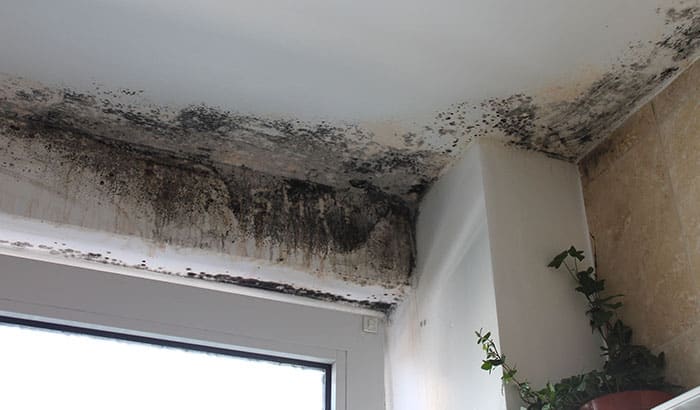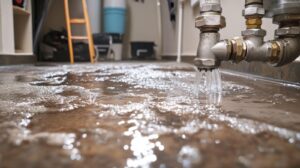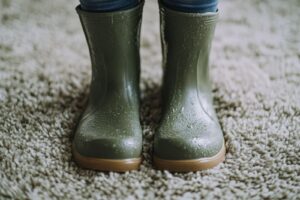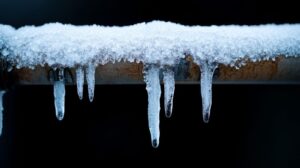Detecting mold in your home is challenging. These often microscopic lifeforms manage to remain elusive until their numbers grow too big to be ignored. But mold spores can cause health problems before you even notice them there.
A primary part of taking care of your home is ensuring a safe and clean environment. Long exposure to mold increases your risk of mental health problems like anxiety, depression, memory loss, and insomnia. It can also increase the likelihood of lung problems.
Keeping your home clear of mold is vital for maintaining your health in the short and long term.
Here are some ways you can test for mold in your home.
- Visual Test
Mold is often visually apparent. Although it is made from microscopic organisms, it is often visible once a mold infestation has enough time to grow and spread.
The most common shape for a mold infestation looks like a pattern of droplets or splashes. These round splotches come from mold spores that stick to and grow out from a moist surface.
The color and texture of the mold will differ by species. Generally, mold can be black, green, red, or green. It will typically be covered in a fuzzy texture, but some mold species are known to appear slimy, fluffy, or spongy. If it looks out of the ordinary, there is a chance it is mold.
A closely related cousin of mold is mildew, which grows white and fuzzy and elicits similar consequences as mold.
Patches of mold may be mistaken for dust, harmless water damage, or grease. A visual test isn’t always reliable, but more often than not, you can identify mold early on visually.
- Health Test
One of the reasons mold is such a hazard is because it causes health problems.
The symptoms of mold spore exposure aren’t unique enough to be able to positively confirm the presence of mold by physical health alone. In fact, the symptoms may just seem like common allergies or cold and flu symptoms.
A good way to use your health as a mold indicator would be to measure how you feel based on where you are. If you are away from home for a day and notice a measurable improvement in how you feel, the cause may be mold.
But, other environmental factors could make you feel ill at home. Allergies, air quality, and humidity levels may all affect your physical health.
Health may not be the most reliable way to test for mold growth, but it can alert you that a problem exists and lead you in the right direction.
- Smell Test
Mold feeds on degrading biological material. Essentially, mold eats living and dead things. Fungi provide an essential role in our environment. They break down biological material into base components that are recycled back into the environment.
One of the downsides of human civilization is our use of dead things in our infrastructure. Millenia ago, our ancestors discovered that dead organic material makes great building material. Thus started the era of tools made from wood and other organic materials.
Being organic, wood decomposes. Modern methods of construction delay that degradation as much as possible, but our raw materials are still at risk of funguses.
Like all other living things, fungus creates waste when it feeds. Much of the waste mold produces is gaseous. If there is enough mold in an area, the average person may be able to detect mold by its smell.
Depending on the species of mold, you may smell something:
- Musty
- Earthy
- Rotten
- Sour
- Chemical
- Sweet
- Metallic
There are numerous smells associated with mold. The bottom line is that it doesn’t smell like the air fresheners you put out at Christmas!
As with the health test, being sensitive to the changing smell of your home can lead you to discover mold.
- DIY Mold Test
If you want to be more scientific about diagnosing your mold problem, grab your white coat and goggles and prep yourself for an in-home test!
Scientists will often take small samples and allow them to grow in an optimal environment. When enough of the organism has matured, determining the source of the problem, if there even is a problem, becomes much easier.
At-home DIY mold tests are easy to use. You may use them to test the air quality in your home or to check an area for mold growth.
To test a patch for mold, a swabbed sample of a surface will be incubated for a few days to allow the fungus to grow. If anything grows, you know you have a mold infestation that needs cleaning. If not, you’re likely safe!
- Bleach Test
A crude but more scientific approach to testing for mold and fungi is using a small amount of bleach on a portion of the surface you suppose is covered with mold.
Bleach will kill fungus. When testing for fungus this way, apply a small amount of bleach to the suspect area. If the area in question clears after a couple of hours, you likely have a mold problem.
- Routine Inspections for Mold in Your Home
You may want to do routine sweeps of areas that are likely to develop mold. This involves all the different methods we mentioned before but in a proactive way.
Routinely look for mold in areas that are likely more warm, moist, and dark. When in these areas, look and smell for anything that would make you suspect mold. Use your most comfortable testing method to determine what areas are infested with mold requiring immediate attention.
- Call a Pro Like Black Diamond Water & Disaster Restoration
When all else fails, you can detect mold in your home by calling in the professionals to help.
Of all the methods you can use to uncover mold in your home, calling in a professional is among the easiest and most sure ways to diagnose and resolve a problem.
If you suspect there may be mold in your home, call us now to help you clean it up. Helping you maintain a safe and healthy environment is our priority.
toto slot






